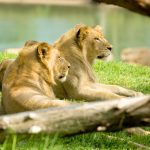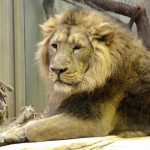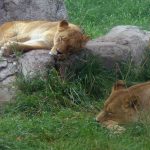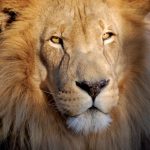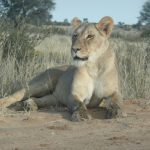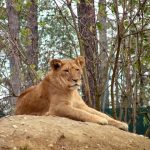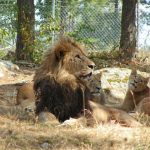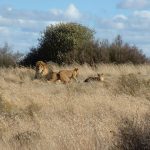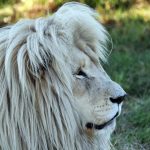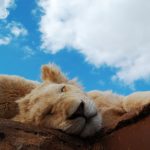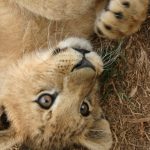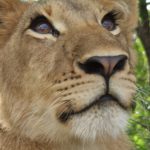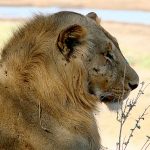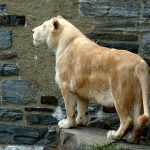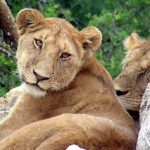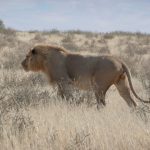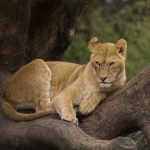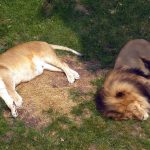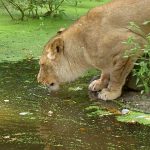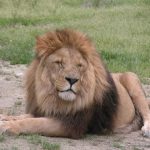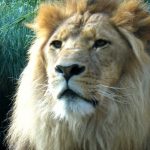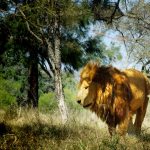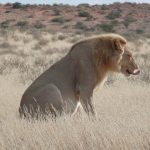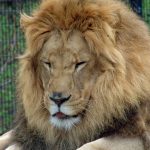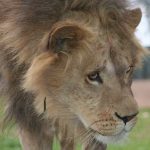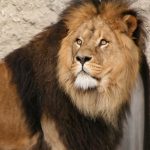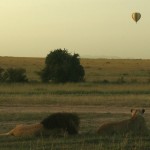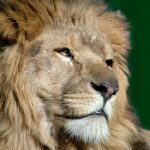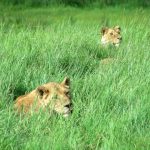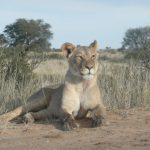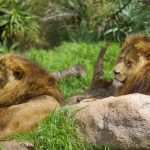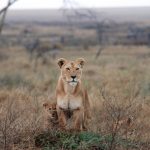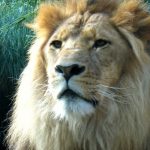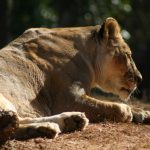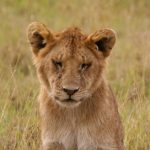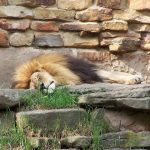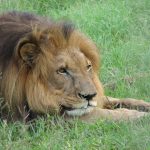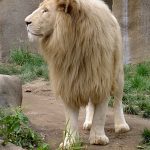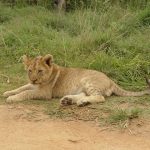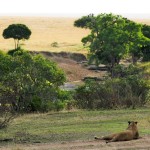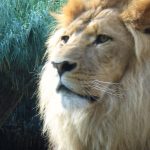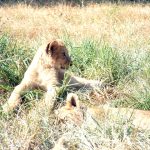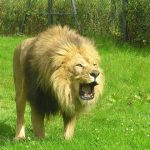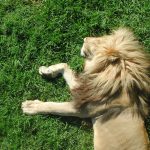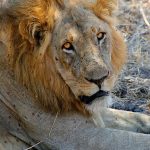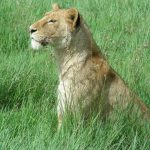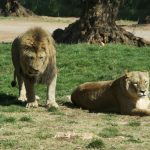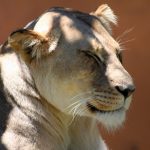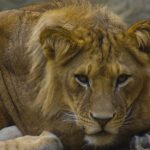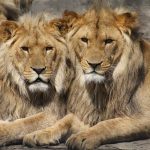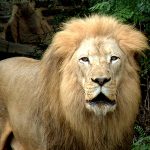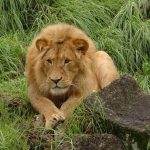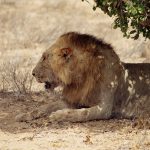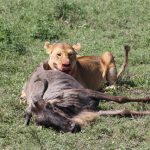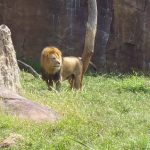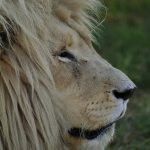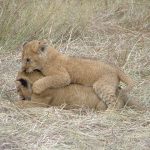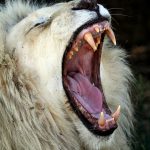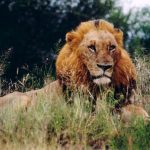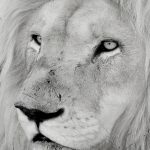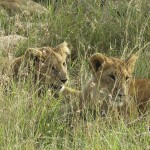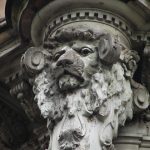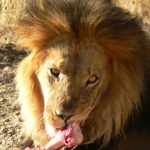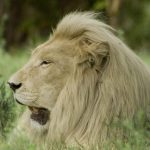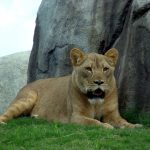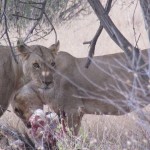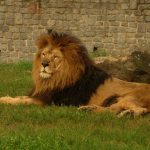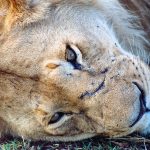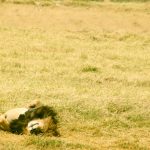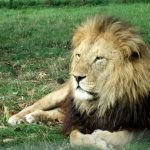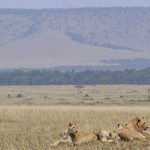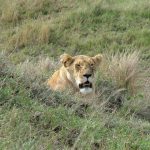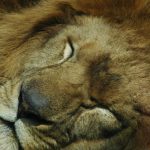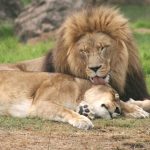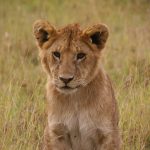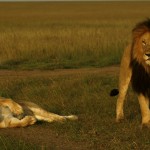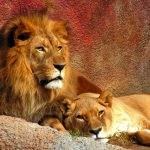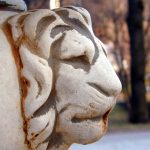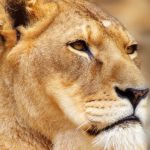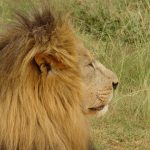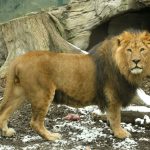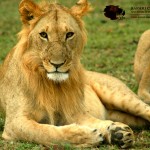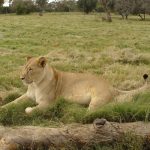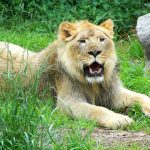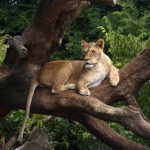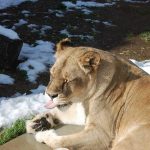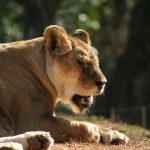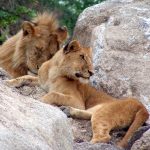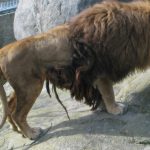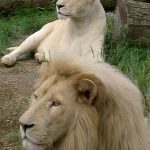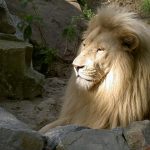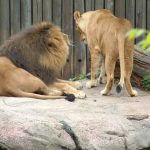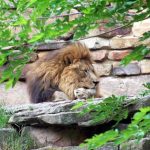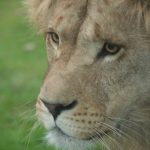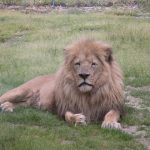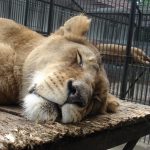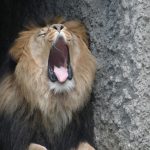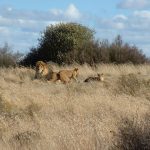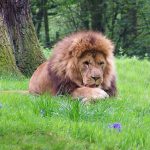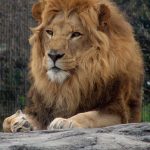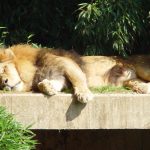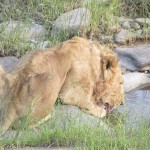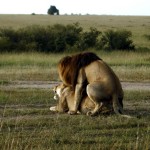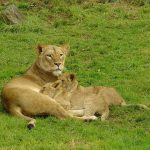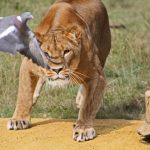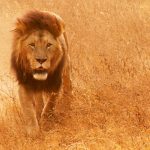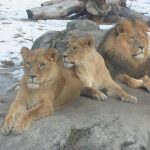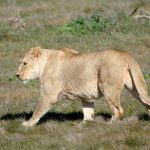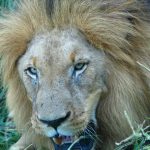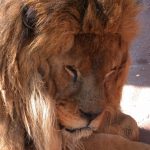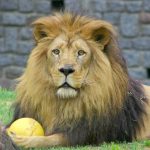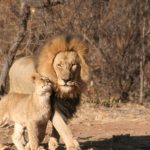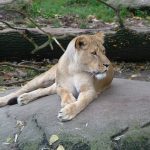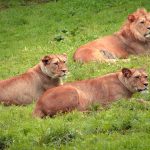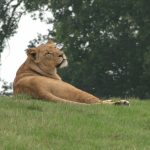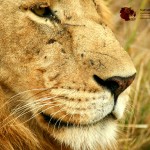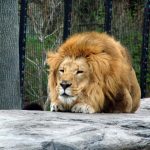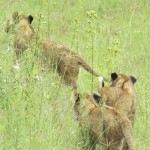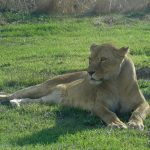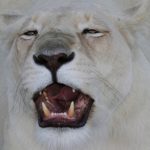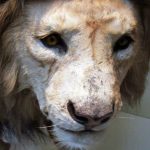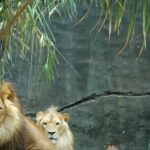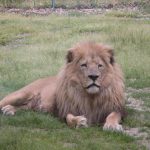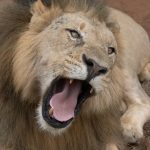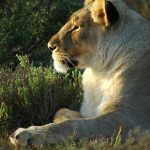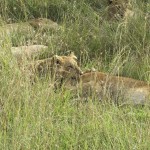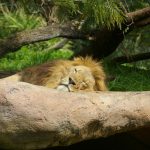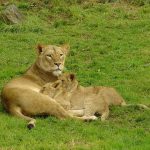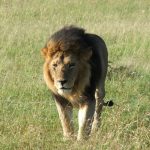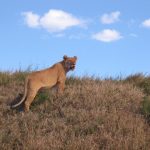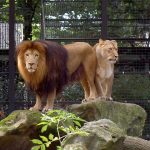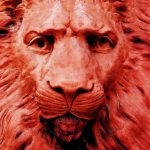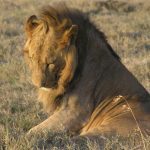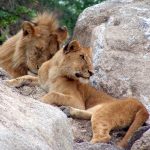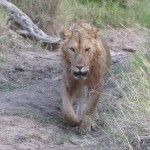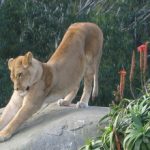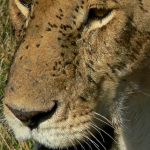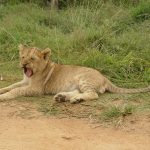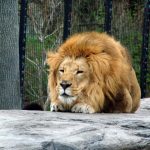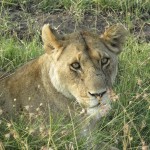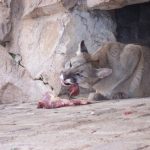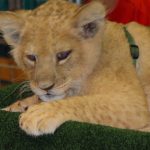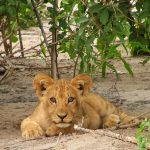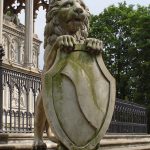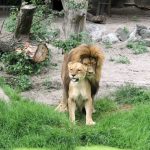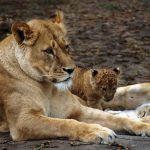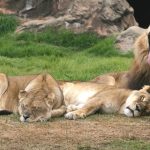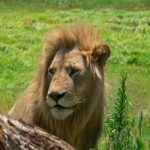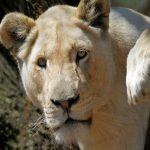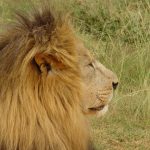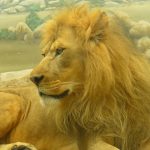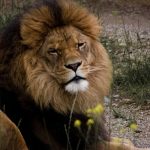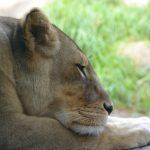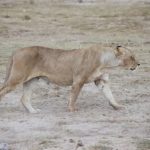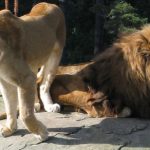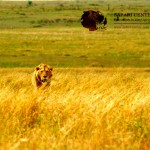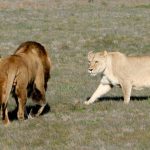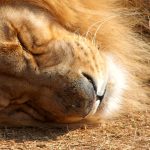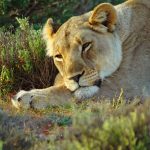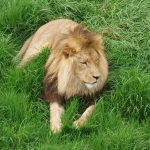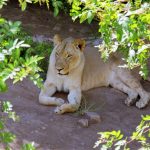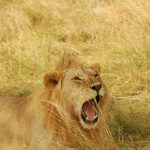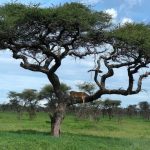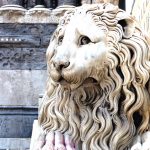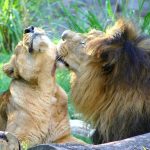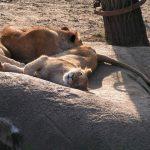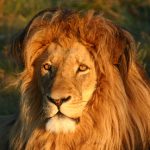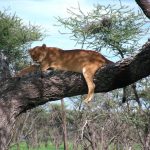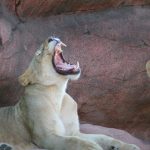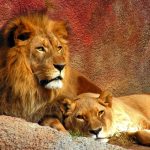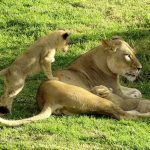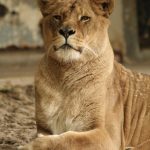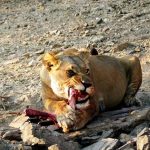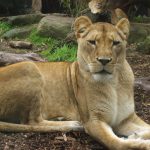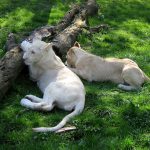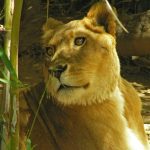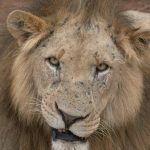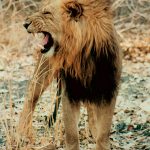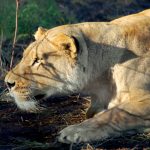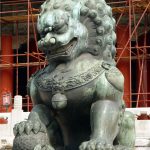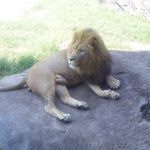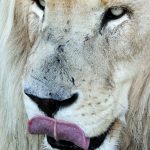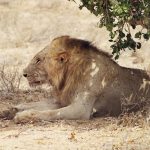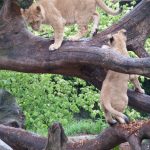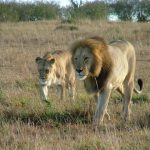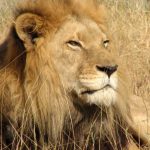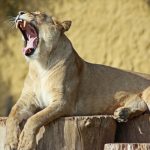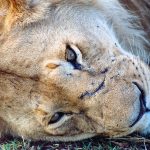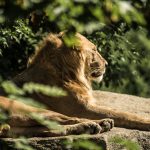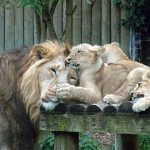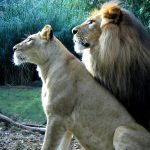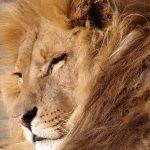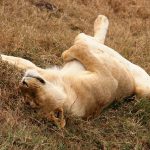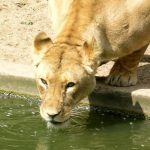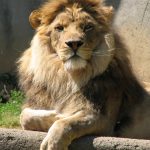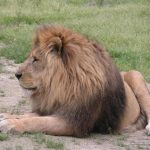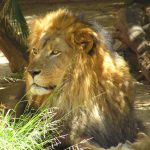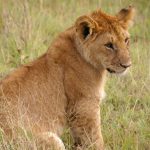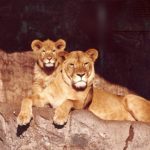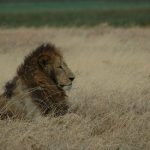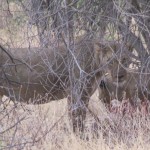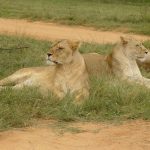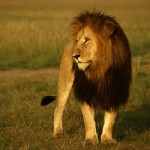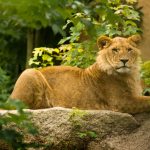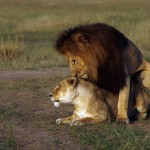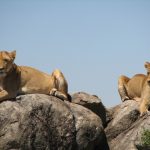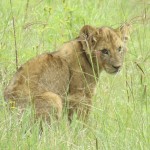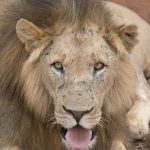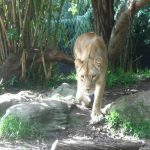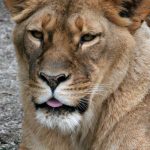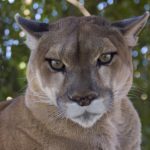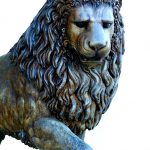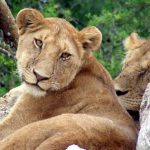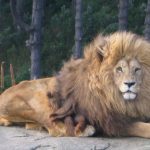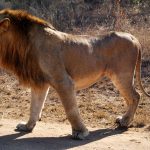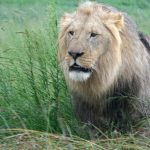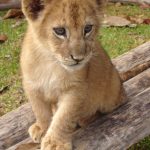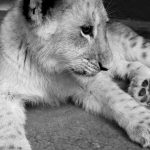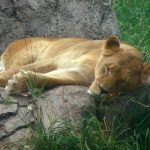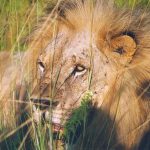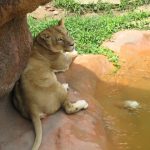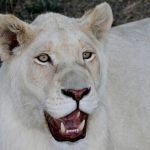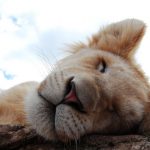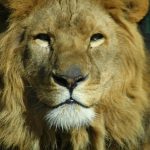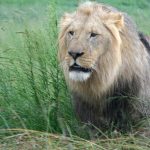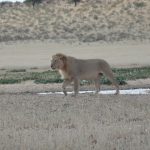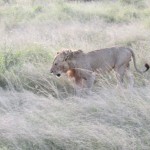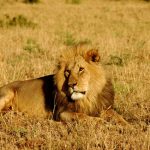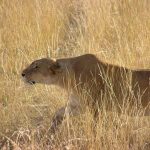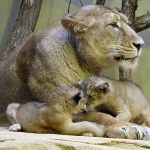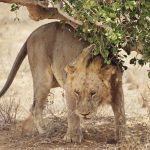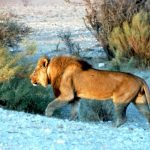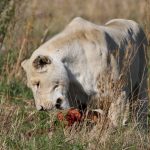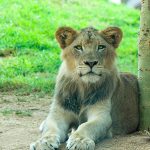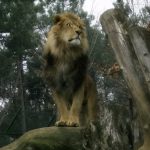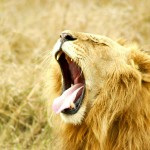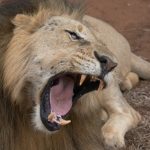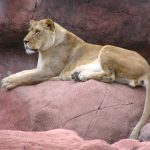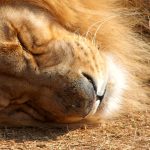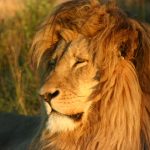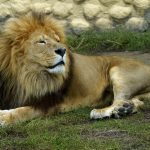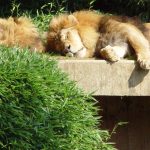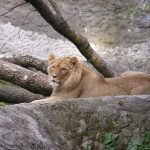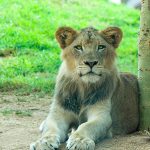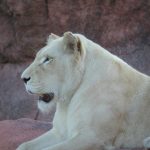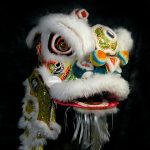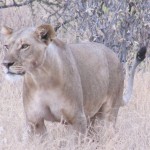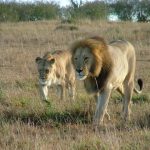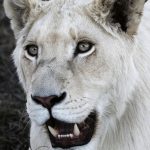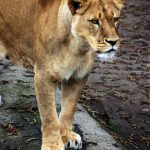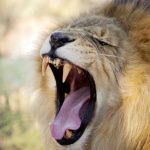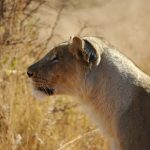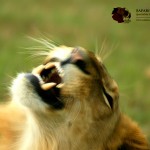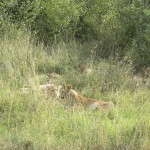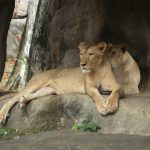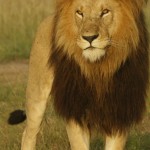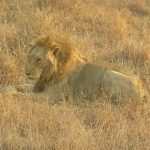- A lion’s roar can be heard up to 8 km away
- Male lions spend their time maintaining the boundaries of their territory by roaring, chasing off intruders, and marking it with urine
- Lions are not above scavenging spoiled meat or stealing kills
- Lion is King of the Jungle
- Spotting a pride of Tsavo lions is a rare sight
- Lions live in groups called pride that consists of a dozen or so females, up to three males, and their young whose territory may include some 259 square kilometers of open woodlands, grasslands, or scrub
- In Kenya, you can see lions in Amboseli, Maasai Mara or by visiting Kenya’s national reserves and parks
- Lions and tigers are closely related and have very similar body type
- An adult male lion usually eats first followed by the females and the cubs
- Within the pride, the males are the fathers of the cubs
- The lion plays a very important role for the young Maasai boys at the time of the transition from childhood to adulthood
- Lion is called the King of the Beasts or King of the Jungle
- Lions live in groups called pride whose territory may include some 100 square miles
- A lion is a symbol of Kenya’s pride and Nationahood
- Young male cubs eventually leave and take over a group that is headed by another male
- An African lion has a rich and long history with the Maasai
- Symbol of Kenya’s Pride and Power
- Lion is called the “King of the Beasts” or “King of the Jungle”
- King of the Jungle
- The African lion is a symbol of Kenya’s pride and power
- The territory of a lion’s pride may include some 100 square miles
- A lion’s prey includes antelopes, buffaloes, young elephants, zebras, rhinos, hippos, crocodiles wild hogs, and giraffes
- Lions are only found in parts of sub-Saharan Africa and in India’s Gir Forest
- Lion is reverently known as the “King of the Beasts”
- Symbol of Kenya’s Pride and Nationhood
- Lions roar menacingly to warn intruders
- An adult male lion usually eats first followed by the females
- The lion is a symbol of Kenya’s Pride and Power
- Wild lions currently exist in Asia and in sub-Saharan Africa
- Lionesses are the pride’s hunters
- Maasai warriors have battled with countless lions to protect their cows
- The lion is a symbol of Kenya’s Pride
- Out of all the wildlife, no animal arouses as much admiration and awe as the lion
- The lion is a symbol of Kenya’s pride and power
- Prides are families that include up to a dozen or so females, three males, and their young where all lionesses are related
- Female lions use teamwork to bring their prey down
- “King of the Beasts”
- Tsavo lions are fearsome beasts
- Lions usually hunt at night
- Symbol of Kenya’s Pride and nationhood
- Male lions spend their time guarding the cubs and their territory
- Lions savor the oryx antelope species
- Lions have disappeared from Southwest Asia and North Africa in historic times
- Lions steal kills from hyenas
- Lions savor the large oryx antelope species
- Lions are intimidating animals
- The Maasai warriors have battled with countless lions to protect their cows
- A lion roars menacingly to warn intruders, and chases off animals that encroach on its turf
- Lion plays a very important role for the young Maasai boys at the time of the transition from childhood to adulthood
- Male lions spend their time maintaining the boundaries of their territory by roaring
- Lion is reverently referred to as the King of the Beasts
- At maturity, the young male lions leave their prides and spend several years as nomads
- Within the pride, the male lions are fathers of the cubs
- Lions live in groups called prides that include up to a dozen or so females, three males, and their young
- Male lions spend their time guarding the cubs and maintaining the boundaries of their territory by roaring, and chasing off intruders
- In Kenya, you can see a lion pride in its natural habitat
- Lions particularly savor the large oryx antelope species
- When resting, lions enjoy good fellowship with lots of head rubbing, touching, licking and purring
- Lions mark an area with urine
- Fighting and squabbling are common among lions
- Lion is known as the King of the Beasts or King of the Jungle
- Within the pride, males are the fathers of the cubs
- A lion marks its area with urine
- Within the pride, the males are fathers of the cubs
- Conflicts with humans and habitat loss are the major reasons for lion population decline
- Young male cubs eventually leave and establish their own prides
- A lion roars menacingly to warn intruders
- KIng of the Beast
- Once a lioness in Samburu National Park adopted six baby oryx in one year
- Some lion species live in bushes and forests but not all
- A lion has a rich and long history with the Maasai
- The Maasai tribe once interacted with the lions
- The symbol of courage, power, and nobility
- Lions have been celebrated for their strength and courage
- Male lions maintain the boundaries of their territory
- Female lions typically hunt together
- The lion is a symbol of Kenya’s Pride and Nationhood
- Lions are also found in India’s Gir Forest
- The African lion is a symbol of Kenya’s Pride and Power
- Symbol of Kenya’s pride and nationhood
- Lion is the second-largest living cat
- Lions are generally a tawny yellow in color
- A lion pride’s territory may include some 259 square kilometers
- Lionesses are the pride’s main hunters who prey upon antelopes, wildebeest, zebras, and other large animals of the open grasslands
- The thick manes are a unique trait to male lions
- King of the Beasts
- The lion is a member of the family Felidae
- After a meal, lion spends an entire day sleeping and resting
- Lionesses are the pride’s hunters who prey upon antelopes, wildebeest, zebras, and other large animals of the open grasslands
- At maturity, young male lions leave their prides and spend several years as nomads
- A Masai boy has to fight and kill a lion to become a warrior but the practice has been outlawed
- Tsavo lions are very elusive
- A lion’s prey includes buffaloes, young elephants, zebras, rhinos, hippos, crocodiles wild hogs, and giraffes but sometimes eat smaller prey like mice, hares, birds, and tortoises
- Male lions spend their time guarding the cubs and maintaining the boundaries of their territory
- Adult male lions usually eat first followed by the females
- Male lions guard the cubs and their territory
- Male lions spend their time maintaining the boundaries of their territory by roaring, and chasing off intruders
- Lions at Cleveland Metroparks Zoo
- Out of all the wildlife, no animal arouses as much admiration and awe as the lion in Kenya
- Lions play a very important role for the young Maasai boys at the time of the transition from childhood to adulthood
- A lion’s prey includes antelopes, buffaloes, young elephants, zebras, rhinos, hippos, crocodiles wild hogs, and giraffes but sometimes eat smaller prey like mice, hares, birds, and tortoises
- Tails of lions end in a tuft of hair
- Female lion cubs typically stay with the group
- The thick manes of male lions protect their necks when they fight
- Lions mark their area with urine
- Only male lions boast the impressive fringe of long hair called manes
- Female lions are more agile than males
- Lion populations are untenable outside national parks and designated reserves
- Only male lions boast the impressive fringe of long hair called manes that encircle their heads
- After tiger, lion is the second-largest living cat
- Female lions are more agile and smaller than males
- Adult male lions usually eat first followed by the females and the cubs
- Lions are magnificent animals
- African lions have a rich and long history with the Maasai
- Lion is a symbol of courage, power, and nobility
- Tsavo lions are very elusive and fearsome beasts
- Kenya’s lions are Africa’s most fiercest and feared predators
- Maasais once interacted with the lions
- Male lions in Tsavo do not have manes
- Symbol of Kenya’s Pride
- Once a lioness in Samburu cared for six baby oryx in one year
- Male lions spend their time guarding
- The Maasai tribe have battled with countless lions to protect their cows
- The lion belongs to the genus Panthera
- The thick manes are a unique trait to male lions that protect their necks when they fight
- The West African lion population within Africa is particularly endangered
- A lion is a symbol of Kenya’s Pride and Nationahood
- Adult male lions usually eat first
- Lion represents Kenya’s nationhood
- Lions steal kills from wild dogs
- “King of the Jungle”
- In a pride all lionesses are related
- The lion has a rich and long history with the Maasai
- In the wild, male lions seldom live longer than 10 to 15 years
- A lion’s prey includes buffaloes, young elephants, zebras, rhinos, hippos, crocodiles wild hogs, and giraffes but sometimes eat smaller prey like mice, hares, birds, lizards, and tortoises
- Lions are very social animals
- A lioness in Samburu once cared for six baby oryx in one year
- After a meal, lion spends an entire day sleeping and resting under the Acacia trees
- Female lions are smaller than males
- Only male lions boast manes
- Lionesses use teamwork to bring their prey down
- The Maasais once interacted with the lions
- Compared to other cats lions are unusually social
- The African lion has a rich and long history with the Maasai
- Lions tend to be darker in color in areas of dense vegetation and lighter in hot, arid areas
- After a meal, a lion spends an entire day resting and sleeping under the Acacia trees
- Lions once roamed most of Africa
- Lion is closely related to tiger and have very similar body types
- Lion was the largest land mammal after humans until about 10,000 years ago
- Female lions are the main hunters of the group who use teamwork to bring their prey down since their prey is faster than them
- Male lions in Tsavo are unique because they do not have manes
- Young lions do not hunt until they are a year old
- Lions live in groups
- The lion is a symbol of Kenya’s pride and Nationhood
- Lion are a symbol of courage, power, and nobility
- Female lions use teamwork to bring their prey down since their prey is generally faster than them
- Maasai once interacted with the lions
- Lions live in groups called pride whose territory may include some 259 square kilometers
- The lions are the laziest among the big cats
- Lion is dwarfed slightly by the tiger
- Lions are not above stealing kills
- Lions are ruthless
- Lions live in groups called prods whose territory may include some 100 square miles
- The African lion is a symbol of Kenya’s pride and Nationhood
- Lion is reverently referred to as the “King of the Beasts” or” King of the Jungle”
- Female lions typically prey mostly on large ungulates
- The lion is a magnificent animal
- Lion is the second largest cat
- The lion is a symbol of courage, power, and nobility
- Tsavo lions are fearsome beasts and are very elusive
- Lion is King of the Beasts
- A lion marks an area with urine
- African lion has a rich and long history with the Maasai
- Lions live in groups called pride that consists of a dozen or so females, up to three males, and their young whose territory may include some 100 square miles
- The Maasais have battled with countless lions to protect their cows
- The territory of a lion’s pride may include some 259 square kilometers
- Maasais have battled with countless lions to protect their cows
- Lions have a rich and long history with the Maasai
- Lion has a rich and long history with the Maasai
- Lionesses use teamwork to bring their prey down since their prey is generally faster than them
- Symbol of courage, power, and nobility
- Symbol of Kenya’s pride and power
- After a meal, a lion spends an entire day sleeping and resting
- Lion is reverently known as the King of the Beasts
- Once a lioness in Samburu adopted six baby oryx in one year
- Lion is reverently called the King of the Beasts
- Group of lions is called a pride
- A lioness in Samburu National Park once adopted six baby oryx in one year
- A Masai boy has to fight and kill a lion to become a warrior
- Prides are family units that include up to a dozen or so females, three males, and their young
- A lion chases off animals that encroach on its turf
- Each lion looks out for itself when it comes to food
- Mature male lions are unique for their thick mane of black or brown hair
- A lion’s prey includes antelopes, buffaloes, young elephants, zebras, rhinos, hippos, crocodiles wild hogs, and giraffes but sometimes eat smaller prey like mice, hares, birds, lizards, and tortoises
- After a meal, lion can spend an entire day resting and sleeping
- The lions play a very important role for the young Maasai boys at the time of the transition from childhood to adulthood
- An adult male lion usually eats first
- Males and females pride members take on very different roles
- Male Lion lying on a Rock
- Lions live in groups called prides where all lionesses are related
- Lionesses are the pride’s main hunters
- Lions are not above stealing kills or scavenging spoiled meat
- Lions live in groups called prides
- Lion is known as the “King of the Beasts” or “King of the Jungle”
- Lion cubs do not hunt until they are a year old
- Lions live in groups called pride that consists of a dozen or so females, up to three males, and their young whose territory may include some 259 square kilometers
- Lion is “King of the Beasts”
- Lions are found only in sub-Saharan Africa
- The lion is a symbol of Kenya’s pride and power
- Lion is reverently referred to as the King of the Beasts or King of the Jungle
- Maasai tribe once interacted with the lions
- Lions typically inhabit savanna and grassland
- Maasai tribe have battled with countless lions to protect their cows
- Some male lions exceed 550b in weight
- Young male Lion lying on a Rock
- An endangered remnant population of lion can be found in the Gir Forest National Park in India
- Lion is a magnificent animal
- There has been a major lion population decline of 30–50% during the second half of the twentieth century
- Lions live in groups called prides that are families that include up to a dozen or so females, three males, and their young
- A symbol of courage, power, and nobility
- A female lion uses teamwork to bring its prey down since the prey is generally faster than them
- The African lion is a symbol of Kenya’s Pride and Nationhood
- Male lions defend the territory of their pride
- Male lions spend their time guarding the cubs and maintaining the boundaries of their territory by roaring
- A lioness in Samburu National Park once cared for six baby oryx in one year
- Lion is “King of the Jungle”
- Once a lioness in Samburu National Park cared for six baby oryx in one year
- Lions live in groups called prides that are families that include up to a dozen or so females, three males, and their young where all lionesses are related
- Kenya offers several safaris where you see a lion pride in its natural habitat
- Lions live in groups called pride that consists of a dozen or so females, up to three males, and their young whose territory may include some 100 square miles of open woodlands, grasslands, or scrub
- Lion is the symbol of courage, power, and nobility
- Lions live in groups called prides that include up to a dozen or so females, three males, and their young where all lionesses are related
- Squabbling and fighting are common among lions
- When resting, the lions enjoy good fellowship with lots of head rubbing, touching, licking and purring
- At maturity, the young males leave their prides and spend several years as nomads
- Female lions use teamwork to bring a prey down
- The African lion is a symbol of Kenya’s Pride
- A pride of lions consists of a small number of adult males and related females and offspring
- Lions live in groups called prides that are family units that include up to a dozen or so females, three males, and their young
- Lions live in family units known as prides where all lionesses are related
- Out of all the wildlife in Kenya, no animal arouses as much admiration and awe as the lion
- A lion is a symbol of Kenya’s Pride
- At maturity, young males leave their prides and spend several years as nomads
- A lioness in Samburu once adopted six baby oryx in one year
- Mature male lions are unique for their thick mane of black or brown hair that encircles the neck and head
- Lions live in groups of around 30 lions
- Not all lions live in prides
- The commonly used term for lion is African lion
- Prides are family units that include up to a dozen or so females, three males, and their young where all lionesses are related
- Lion is reverently called the “King of the Beasts”
- Male lions spend their time guarding the cubs and maintaining the boundaries of their territory by roaring, chasing off intruders, and marking it with urine
- Lion is reverently referred to as the “King of the Beasts”
- The lion is a symbol of Kenya’s Pride and Power
- African lions only hunt when hungry
- Lions are the laziest among the big cats
- After a meal, lion can spend an entire day resting and sleeping under the acacia trees
- Lions have been celebrated for their courage and strength
- The lion is a symbol of Kenya’s Pride and nationhood
- A lion pride’s territory may include some 100 square miles
- In captivity male lions can live more than 20 years
- Lionesses use teamwork to bring a prey down
- Within the pride, males are fathers of the cubs
- Lion’s only predators are humans
- Sometimes lions eat smaller prey like mice, hares, birds, lizards, and tortoises
- Symbol of Kenya’s pride and Nationhood
- Some male lions exceed 250kg in weight
- Injuries from continual fighting with rival male lions greatly reduce the longevity of male lion population
- Lions only hunt when hungry
- The scientific name for lion is Panthera leo
- Lions live in groups known as prides where all lionesses are related
5 facts about lion
- Lions are apex and keystone predators
- Lions are expert scavangers
- Lions do not typically hunt humans
- Lions usually live in groups of 15
- Female lions do most of the hunting
To receive a colourful digibook about lion with videos, images and text, please fill out the following form or simply email us on safaris@safari-center.com

